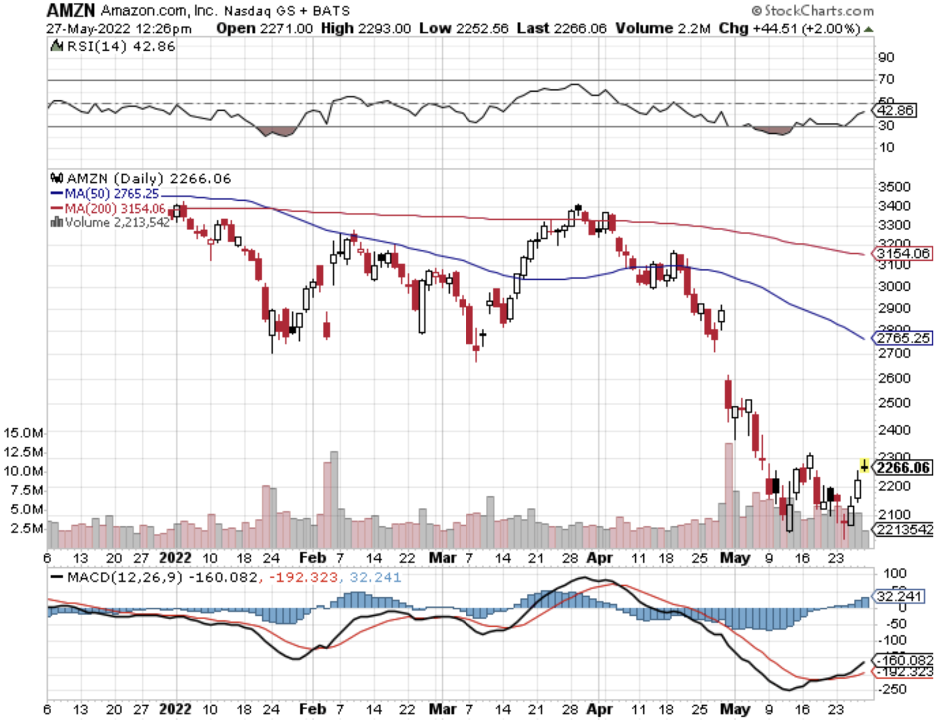Amazon’s decision to look for subletters of 10 million square feet of warehouse space means they don’t believe ecommerce growth will migrate into the extra space they planned for.
This is a big deal because it takes a long time to acquire the extra footage to expand capacity.
It doesn’t happen in one day.
It’s almost a surrender of sorts that this short-term pandemic ecommerce bump had no legs.
It’s over like it almost never existed, sort of like the health crisis.
So why is this a problem?
Amazon’s ecommerce investors' main reason for investing in Amazon is to earn money through appreciating shares.
This only comes about if their businesses are growing and behind their cloud division called Amazon Web Services (AWS), ecommerce is the second most important.
This is why Amazon has seen such as epic selloff in the first half of the year.
I do believe the negativity has somewhat overshot which is why I executed a deep-in-the money bull call option spread on this stock.
It’s not the death of Amazon, hardly so, but it’s been really painful for shareholders.
It was just in 2020 when Amazon added warehouse space faster than it ultimately needed in response to the challenges of the pandemic, outpacing consumer sales and resulting in an extra $2 billion in costs in the first quarter.
However, given the extraordinary demand and uncertainty Amazon was seeing at the time, there’s not much else the company could have done.
This is not what management describes as “right sizing capacity” and in fact is an error in capacity expectations.
Companies don’t spend an extra $2 billion in capacity when they don’t need to.
It would cripple many small ecommerce companies.
Amazon’s online sales fell 3% for the quarter to $51 billion, as shoppers relied less on the company for critical purchases.
Amazon’s recent announcement of a “Buy with Prime” program, serving ecommerce sites other than Amazon.com, takes the company further down the path of using its fulfillment and delivery network to offer shipping as a service, generating additional revenue and potentially competing with UPS and FedEx.
It’s similar to what Amazon did with Amazon Web Services, using its online expertise and cloud infrastructure as a starting point for a business that generated $18.4 billion in revenue in the first quarter.
The company has spent the past few years creating its own last-mile delivery network, known as “AMZL,” leveraging a network of dedicated Amazon Delivery Service Partners and reducing its dependence on third-party delivery companies such as UPS and the U.S. Postal Service.
The 45% selloff in Amazon has been quite overdone bringing the PE ratio all the way down to around 50.
If energy prices and inflation can moderate somewhat in the back half of the year, AMZN would be the first candidate to extend this dead cat bounce into a real bounce back to $3,000 per share.
AMZN is one of the beneficiaries of lower inflation because of its high reliance on fuel to deliver products the last mile.
That cannot be substituted at all so the stock market is reflecting the short-term pain.
The energy having such a stronghold over the tech market is quite unprecedented and don’t expect AMZN to start their oil refiner business.
However, I do expect choppy trading as rising rates and lower purchasing power for Americans do a dirty job on the AMZN bottom line.


